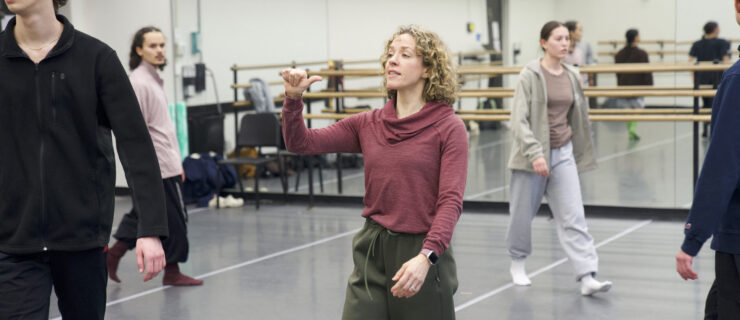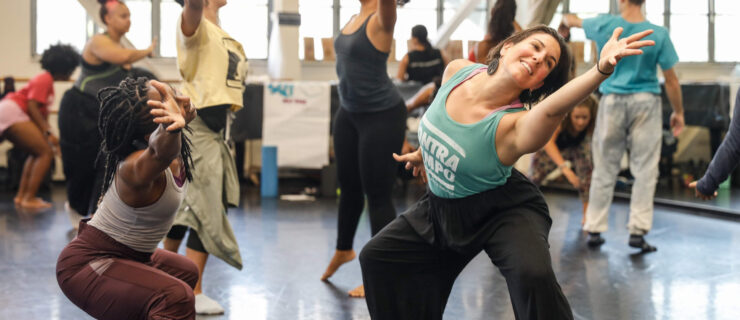The Injury Diet
Injuries are part and parcel of a dancer’s life, but when your ability to move is inhibited by a pull, strain or (don’t even say it!) fracture, you’ll do whatever it takes to get back on your feet. Physical therapy, massage, and acupuncture all play a role, but there’s a less talked about way to help your body mend: proper nutrition.
Whether you’ve got a full fracture, stress fracture, strain, or sprain, it usually takes about four to six weeks for damaged tissue to be replaced. You can tweak your daily diet to aid your recovery. When you’re injured, your body needs plenty of the basics: water, protein, carbohydrates, and healthy fats. Yet many dancers tend to cut back on what they eat when they’re injured because they fear gaining weight. You also can support the healing process with foods that are high in vitamins and minerals—like vitamin C and calcium—and anti-oxidants that combat inflammation.
Because you may stop or curtail your dancing while injured, you may think that you don’t need to drink as much water, but staying hydrated helps move toxins away from the site of injury. San Francisco corps member Courtney Wright, 27, learned the hard way that fluids can help. She never drank much water in class or rehearsal until she went through an injury-prone period. First she sustained a torn labrum in her shoulder, then a bursitis between her first and second metatarsal and related foot pain. “You’ve heard it a million times, but drinking water helps your circulation,” says Wright, who now routinely goes through a 20-ounce bottle per rehearsal. “My muscles were feeling really horrible. More, I could sense the difference in my energy.”
As the building block of tissue, protein also plays a big role; without enough of it, many metabolic processes slow down. The body doesn’t store protein the way it does carbohydrates or fats, says Dr. Richard Gibbs, medical supervisor for San Francisco Ballet, so he recommends adding 15 to 18 percent more protein to your diet when you’re injured.
Injured dancers like Blake Faulds quickly learn why. “You’d be surprised at how fast your muscles atrophy,” says Faulds, a New York dancer who performs with three small dance companies. Last October Faulds slipped, blowing out his knee, dislocating and chipping his patella, and tearing his medial collateral ligament (MCL). Stuck in a half-cast, Faulds soon realized that his muscle mass was deteriorating. He upped his protein intake—mostly lean meats— knowing that combined with his physical therapy, it would help counter muscle deterioration.
Studies have shown that some carbohydrate intake is required for the body to process proteins. Try complex carbohydrates, like brown rice, that break down slowly as they release energy. Plus, Gibbs notes, “Without some carb ingestion, the body will break down protein to make energy.”
“I used to eat two big bowls of pasta a night,” says Faulds, who cut his carbohydrate intake in half after he was injured. “But I was also biking at least 30 miles a day and dancing. Now I eat just smaller portions, like a bowl of rice with dinner.” Opt for whole grains, like oatmeal, bran, or whole-wheat pasta, rather than sugary items or starched foods.
Many dancers avoid fatty foods. But there are healthy fats that the body needs to maintain smooth skin, silky hair, working muscles, and limber joints. Former dancer Shannon Sterne, a licensed dietician who works with dancers at Case Western Reserve University, is a strong believer in Omega-3 fatty acids. These fats have been shown to reduce inflammation and improve circulation. They may also help minimize scar formation by increasing the breakdown of a compound called fibrin, which the body uses to form clots and scars. Omega-3 fats are found in wild salmon, herring, mackerel, and sardines, as well as walnuts and flaxseed.
If adding all these elements to your regular diet seems like a tall order, try supplements like a daily multivitamin. But nothing beats going straight to the source. Milk, for instance, really does do a body good. Sterne says that many dancers consume far too little calcium, which increases their risk of bone fractures. Calcium also prevents muscle cramps, and facilitates nerve impulse transmission, muscle growth, and muscle contractions. If you have a bone injury, taking at least 1200 to 1500 mg of calcium per day is recommended. Sterne says dancers should be sure to drink low-fat milk or orange juice, or eat dairy products (like low-fat cheese and yogurt), almonds, calcium-fortified cereals, and dark green, leafy
vegetables.
You also need vitamin D to help your body absorb the calcium. In the last decade, vitamin D deficiency has become increasingly common in the United States, due to concerns about skin cancer (the body makes vitamin D when it’s exposed to sunlight). Says Sterne, “Dancers should aim to consume three glasses of vitamin D-fortified milk daily, or ensure that their hands and face are exposed to sunlight for about 15 minutes three times a week.”
So don’t stint on essential nutrition when you get hurt. “Healing can only occur if the body is provided with enough calories, protein and other nutrients,” says Sterne. To get back to class and onstage, you’ve got to eat properly. As your mother used to say, “Eat your vegetables!” And everything else you need, too.
Nancy Alfaro is a former dancer and frequent DM contributor. Ainsley Bartholomew is a DM intern.




